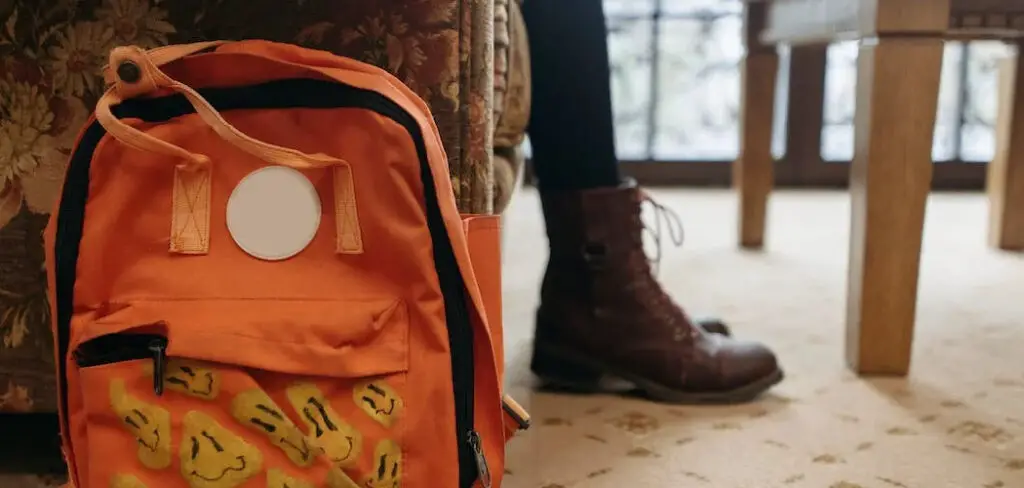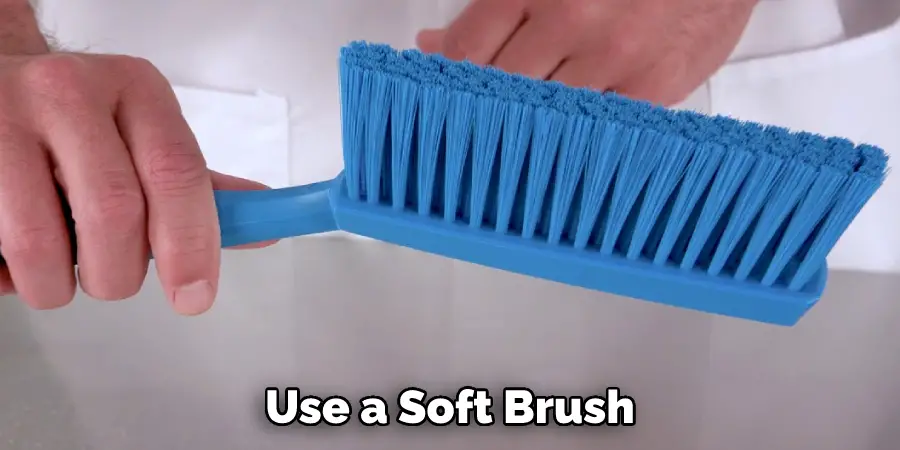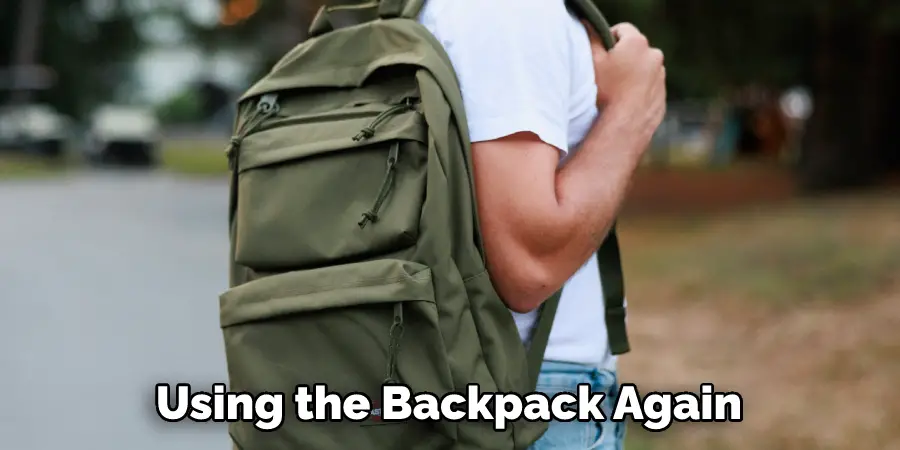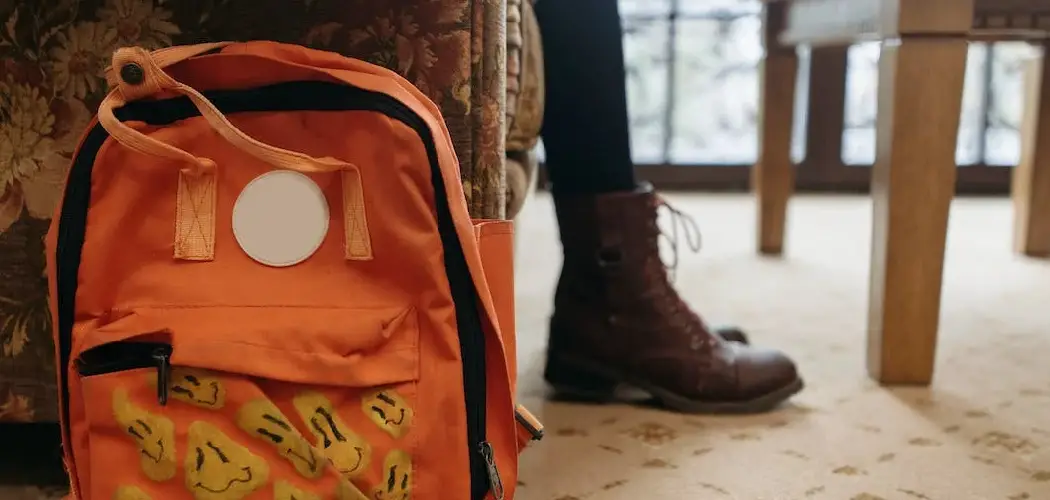Leather backpacks are a stylish and practical way to carry around your everyday belongings. However, over time, dirt and grime can build up on the material and cause it to look worn or discolored. Regularly cleaning your leather backpack is an important part of keeping it in tip-top shape for years to come. With the right tools and techniques, you can easily clean your leather backpack to make it look new again.

The advantages of cleaning a leather backpack are numerous. First and foremost, it helps maintain the longevity of your bag. Regular cleaning helps to remove dirt and debris that can build up over time and cause premature wear. In addition, regular cleaning also aids in keeping bacteria and mold at bay which can cause discoloration or odor in your bag.
A clean bag also looks more aesthetically pleasing and may help to increase its value. You can find step-by-step instructions on how to clean leather backpack in this blog article.
How Often Should You Clean Your Leather Backpack?
The best practice when it comes to cleaning your leather backpack is to clean it regularly. How often you need to do this will depend on how much use the backpack gets and how exposed the material is to dirt, mud, and other elements. Generally speaking, you should aim to clean your leather backpack at least once a month to prevent dirt and grime from building up.
Doing this will also help to prevent a layer of dirt from settling on the surface, which can damage the leather over time. Additionally, if you notice any spills or stains on the backpack, make sure to clean it immediately to avoid staining or discoloration of the material.
Step-by-step Instructions for How to Clean Leather Backpack
Step 1: Inspect the Backpack
Make sure that the outside of your backpack is free from dirt and dust. If there is any stuck-on debris, use a soft brush to remove it before proceeding. Use a damp cloth or white cotton towel to wipe the backpack’s exterior gently. This will help remove any dirt or dust that may have been missed in the inspection. Be sure to pay extra attention to areas such as seams, straps, and pockets.

Step 2: Apply Leather Cleaner/Conditioner
Using a soft cloth, dab some leather cleaner or conditioner onto it. Gently rub the cloth in a circular motion over the entire surface of the backpack. This will help remove any dirt and debris that was not picked up during inspection and nourish and protect the leather. Allow the cleaner or conditioner to sit on the backpack for a few minutes, then buff with a clean, dry cloth.
Step 3: Apply Leather Protector
Once the leather cleaner/conditioner has been applied and allowed to soak for a few minutes, apply a leather protector to help protect your new leather backpack from dirt and water. Using a soft cloth, apply the protector in a circular motion over the entire backpack. Allow the protector to dry completely before using the backpack again.
Step 4: Clean the Lining of Your Backpack
Using a damp cloth or white cotton towel, wipe down the inside lining of your leather backpack. This will remove any dust, dirt, and debris that may have gotten inside. Allow the lining to dry completely before using the backpack again.

Step 5: Store Your Backpack Properly
When you’re done cleaning your leather backpack, make sure to store it in a cool, dry place away from direct sunlight or extreme temperatures. Avoid storing your backpack for long periods of time in a damp or overly humid environment. This will help keep your backpack looking like new for longer.
Following these steps can help you keep your leather backpack clean and pristine, so you can enjoy it for years to come.
Guidelines for How to Clean Leather Backpack
- Test a small, inconspicuous area of the backpack before cleaning it to ensure you don’t damage the leather.
- Vacuum any loose dirt or debris off your backpack with an upholstery attachment on a vacuum cleaner. Ensure that no dust is left behind.
- Use a soft, damp cloth to wipe down the leather gently. Avoid using any harsh detergents or cleaning solutions, as they may damage the leather.
- Use saddle soap, which is specifically designed for leather surfaces, to clean particularly dirty areas. Work up a lather, and then use a soft, damp cloth to wipe it away.
- Use a leather conditioner to help hydrate and protect your backpack after cleaning. Apply the leather conditioner with a soft cloth, then wipe away any excess.
- If you need to treat stains, use a mild soap or detergent specifically designed for leather and test it on a small area before using it on the entire backpack.
- Hang the backpack up and let it air dry after cleaning to help maintain its shape.
- Store your leather backpack in a cool, dry place when not in use, and keep it away from direct sunlight or heat sources to prevent fading and cracking.

Following these guidelines will ensure you can enjoy your leather backpack for years. You’ll keep it looking great and in tip-top condition with proper care and maintenance.
How Can You Prevent Dust and Dirt From Building Up on Your Leather Backpack?
- Wipe down your leather backpack regularly with a damp cloth to remove dust and dirt that has accumulated on the surface.
- Apply a light coat of leather conditioner to help protect the material from environmental factors such as sun, rain, and wind.
- Avoid placing your leather backpack in direct sunlight as this can cause cracking and fading of the material.
- Use a waterproof spray to help protect your leather backpack from rain, snow, and other elements that can damage the material.
- Store your leather backpack in a cool, dry place when not in use to prevent dust from collecting on it.
- Avoid using harsh cleaners or abrasive tools when cleaning your leather backpack.
- If possible, hang your leather backpack when not in use to help keep the bag’s shape and reduce creasing.
- Regularly inspect your leather backpack for signs of wear and tear, such as cracking or fading, and repair any damage that has been done.
- Be sure to follow any specific instructions given by the manufacturer when cleaning your leather backpack.
- Consider investing in good quality, waterproof cover for your leather backpack to help protect it from the elements and prolong its life.
By following these steps, you should be able to keep your leather backpack looking good and lasting a long time. Regular cleaning, maintenance, and inspection are key to keeping your leather backpack in great condition.
How Can You Protect Your Leather Backpack From Water and Other Liquids?
- Apply a leather protector to your leather backpack before using it for the first time. There are many products available that can help protect against water and other liquids. Before applying, test the product on a small discreet area of the bag to ensure no discoloration or staining.
- When water or other liquids are exposed, wipe away the moisture as soon as possible with a soft cloth. Avoid using harsh chemicals or abrasive materials to clean leather.
- Let your leather backpack air dry completely after wiping it down with a cloth. Do not leave it in direct sunlight or near any kind of heat source while drying, as this may cause the leather to crack or fade.
- Reapply the leather protector every few months or when you notice that the waterproofing has worn off. Doing so will help keep your backpack looking and functioning at its best for years to come!
- Store your leather backpack in a cool, dry place when not in use. This will help to ensure that it maintains its shape and coloring over time.

By following these steps, you’ll be able to keep your leather backpack looking great and protected from water and other liquids for years to come.
How Can You Repair Any Wear and Tear on Your Leather Backpack?
If you notice any wear and tear on your leather backpack, there are a few different ways to repair it. You can use a leather repair kit with epoxy or glue to reattach frayed seams, mend small holes, or fill in cracks in the material. Be sure to always test the product before applying it to ensure compatibility with your backpack.
You can also use a leather conditioner to help replenish the look of your backpack and make it last longer. Simply apply the conditioner with a soft cloth and buff after 10 to 15 minutes for the best results. You may need to take your bag in for professional repair or replacement from a leather specialist for deeper cracks and tears.
Frequently Asked Questions
What is the Best Cleaner for Leather?
There are many different cleaners for leather, and it really depends on the condition of the leather and the specific cleaner you are using. Some of the most commonly used cleaners for leather include:
-Water
-Soap
-Clothes Detergent
-All-purpose Cleaner
-Eco-Friendly Cleaner
Can I Use Toothpaste to Clean Leather Bag?
It depends on the type of toothpaste and leather bag. Some people believe that toothpaste can be used to clean leather bags, while others believe that it will only damage the surface of the bag. Ultimately, it is best to test a small amount of toothpaste on a small area of the bag first to see if it does what you want it to and avoid damaging the entire bag if it doesn’t work.
Is Baking Soda Good to Clean Leather?
Yes, baking soda can be used to clean leather. However, it is important to follow the instructions carefully and use the correct amount of baking soda for the task at hand. Baking soda is a caustic substance, and too much can damage the leather and cause it to become brittle. Additionally, baking soda is not effective against oil or grease stains. For effective cleaning of leather, it is best to use a cleaner specifically designed for this purpose.
Which Oil is Best for Leather?
The best oil for leather depends on a variety of factors specific to that particular product. However, some oils that are commonly used to treat leather include:
1. Olive oil: Olive oil is a natural oil that is well-known for its ability to moisturize and protect the surface of leather items. It is also effective at repelling water and other dirt and debris, which makes it a good choice for products that are exposed to rain or other wet weather conditions.
2. Castor oil: Castor oil is another natural oil that is commonly used to treat leather. It has a high viscosity, which makes it ideal for creating a thick layer of protection on the skin. Castor oil also has antioxidant properties, which help to protect the skin from damage caused by free radicals.
3. Beeswax: Beeswax is a natural wax that is often used to treat leather products because of its protective properties and its ability to draw moisture away from the skin. This helps to prevent moisture buildup and dryness in the leather, which can lead to cracking or other problems over time.
Conclusion
When you clean leather, there are some potential disadvantages that you should be aware of. The first is that cleaning leather can be time-consuming and tedious. In order to properly clean leather, you need to take the extra step of using a leather cleaner and conditioner. This means taking the time to purchase a product specifically designed for this purpose and spending time to ensure that it is properly applied and dried.
Cleaning a leather backpack is important to maintaining its quality and longevity. It requires the right supplies and proper care, but it can be quite simple if done correctly. Start by gently cleaning the bag with a damp cloth to remove dirt, dust, or debris. Then use a mixture of mild soap and water to spot-clean any stubborn dirt or stains. I hope reading this post has helped you learn how to clean leather backpack. Make sure the safety precautions are carried out in the order listed.

